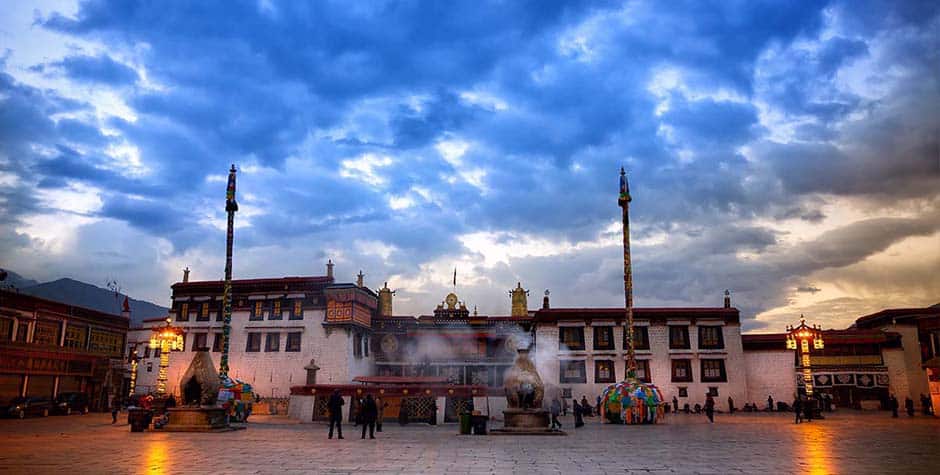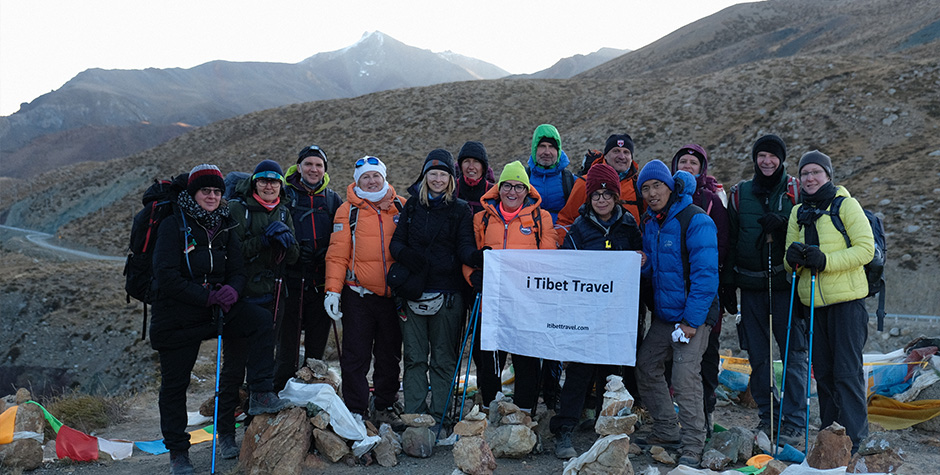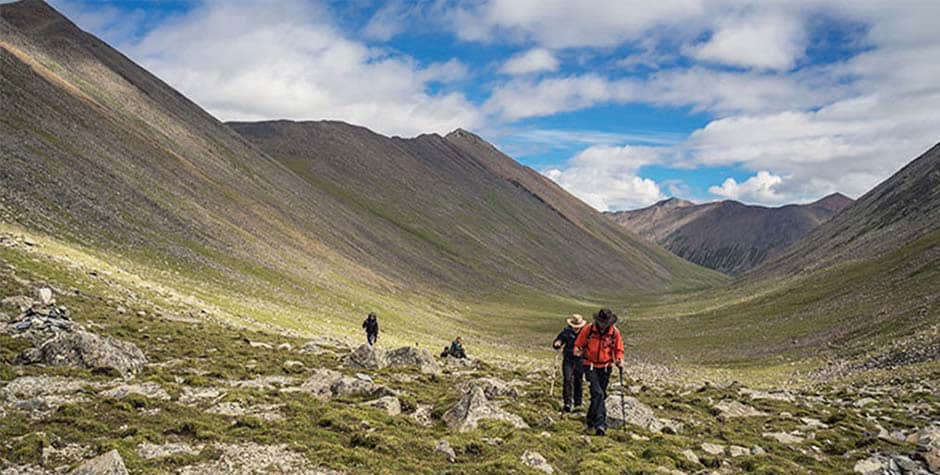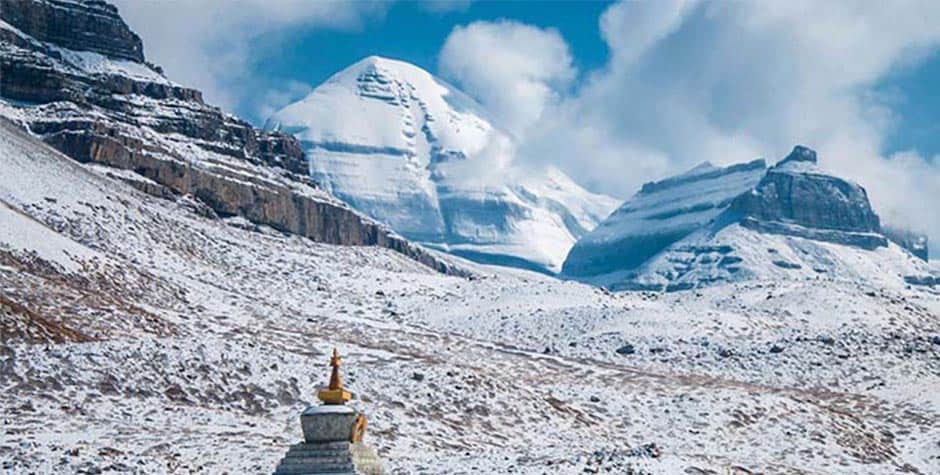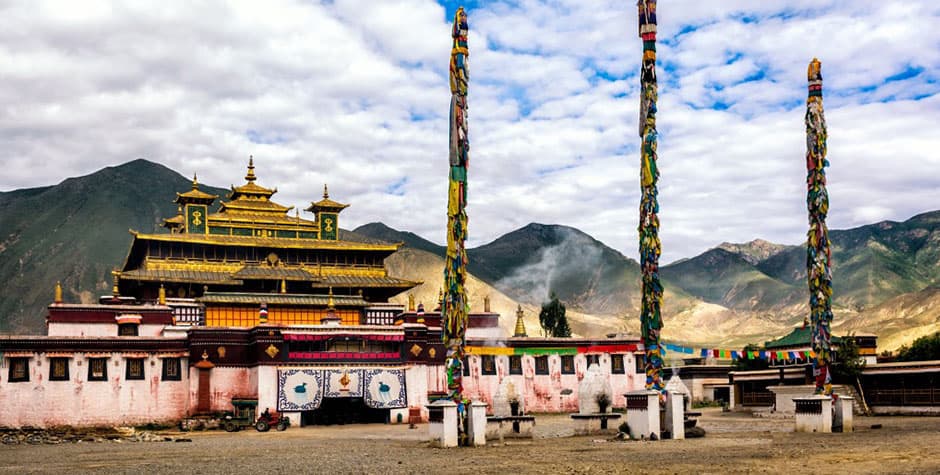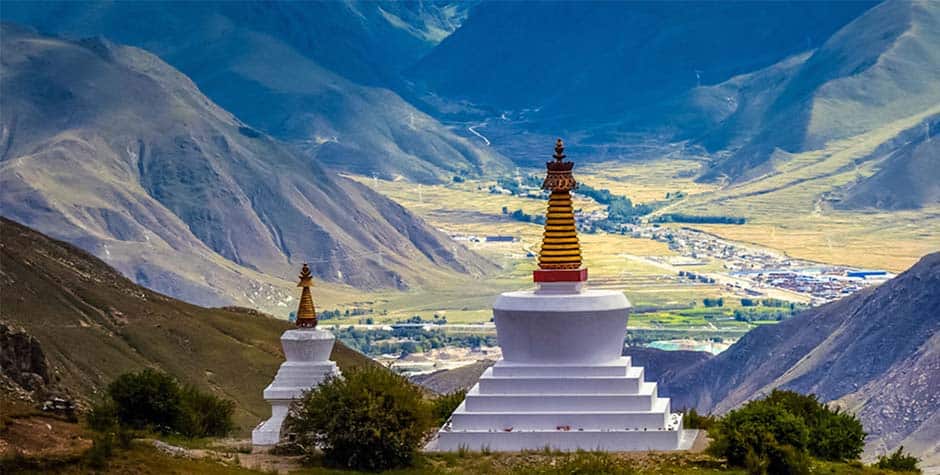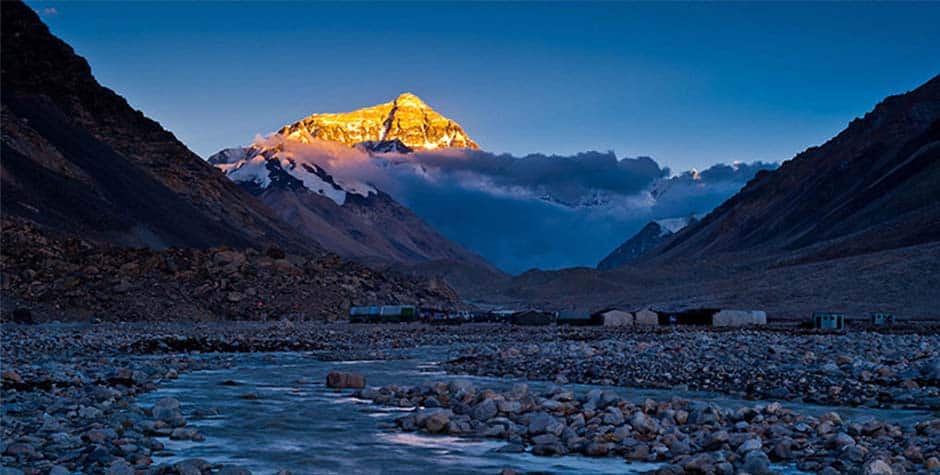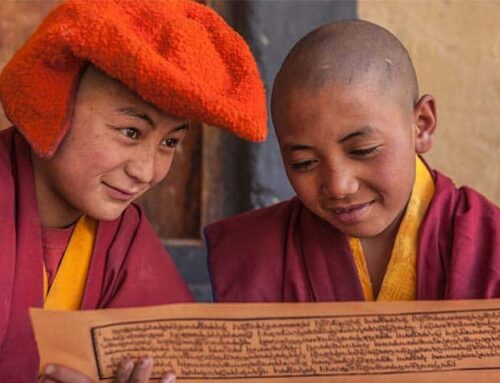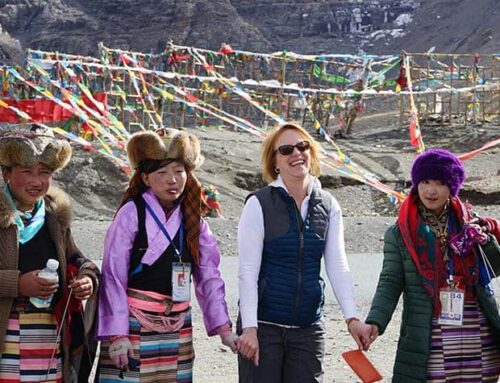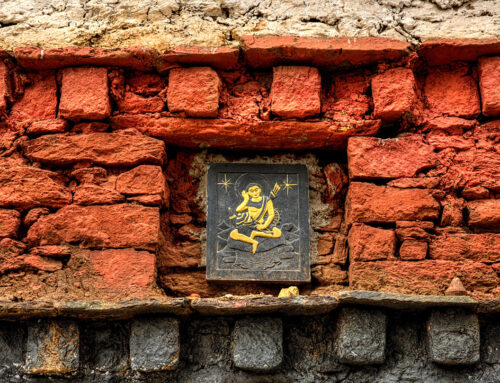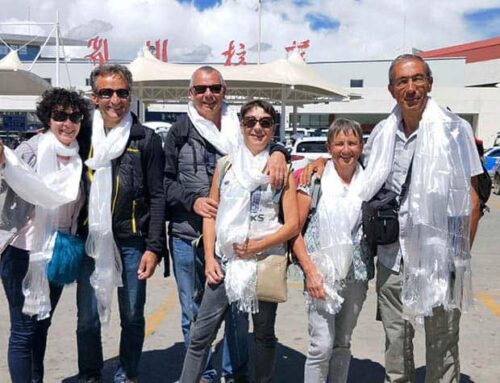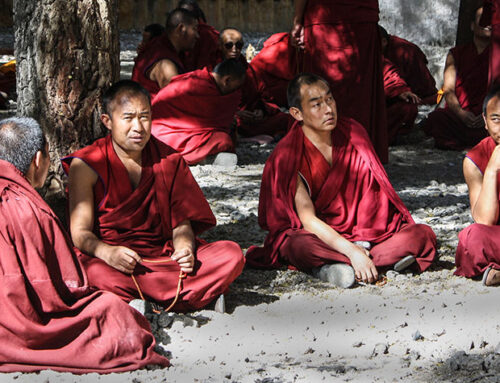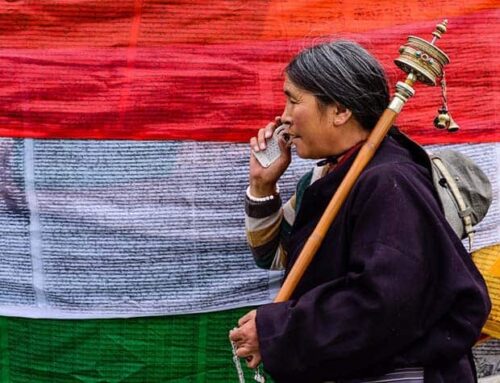Tibetan Architecture is easily recognizable as a unique form of architecture. Yet, studies of Tibetan architecture are still a very unexplore field. With the construction of the first Tibetan Buddhist temple in Central Tibet, we have 1300 years of written history of Tibetan architecture. Yungbulakang Palace is the first example Tibetan Architectural work in Tibet.
Influence from neighboring countries
The earliest Tibetan architectural monuments show the strong influence of the Indian and Nepalese prototypes. You can see it in the Jokhang temple in Lhasa. Monuments and temples build after the second diffusion of Buddhism are built in a locally develop architectura style with minimal influences from foreign architecture. All defensive architecture is based on indigenous technologies and design.
Later, Tibetan people perfected their own unique architectural style. A few standard principles give Tibetan Buildings their Characteristic Organic design.
Architectural local family homes
All our houses and temples are heavy on the lower floor and lighter on the higher levels. Walls are built with the outside bending towards the building. All the roofs are flat, except for the golden rooftops of the Temples and Monasteries, which are uncommon.
All the windows and doors are elegantly paint with a different design. You will see the black frames around the Doors and Windows from the outside. There is a complex wooden overhang decoration on all the doors and windows. All the interior timber frames on the ceiling follow intricate Carvings based on design principles. All our architecture designs are organic, and the buildings appear to grow from the landscape.
Unique feature of Tibetan Architecture
Our Tibetan Buildings are well-suit to the local geographical and climatic conditions. It is a delightful blend of artificial Structure and nature. Our buildings often outlive their utility period. Every bit of the parts can be reused. If the Building decade, it would simply merge back into nature.
Tibetan Architecture has been the preferred architectural style for constructing Monasteries and palaces across the Himalayas and Inner Asia for thousands of years. Potala Palace in Lhasa, a UNESCO World Heritage Site since 1994, is the best-known example of Tibetan architecture. We are sure you will enjoy seeing the Tibetan house during your visit to Tibet. We have a special tour program where you can enjoy Tibetan culture while traveling to Tibet.
Features in Tibetan Architecture
Our Tibetan architecture is a true reflection of our culture. It has plenty of influences from nearby cultures, such as the Chinese Tang Dynasty, the Traditional Indian Buddhist style, the Mongols, and the Nepalese styles of architecture.
When you travel to Tibet, you will find the most unique and fascinating Tibetan architectural style. Tibetan Military fortifications are the Potala Palace and the Sakya Monastery. You will also find the usual Tibetan house with two floors. The lower floors are usually for the livestock and a grain storage house. The upper floor is for the family residence.
The residential part of the family consists of the standard room for gathering and sleeping, the Chapel room for deities, the Kitchen, and the special room for married couples (available in only a few houses). The most common sight of the Tibetan residential home is the Prayer flags on the rooftop.
Some other features of the Tibetan Architecture are:
Build on an elevated spot.
All our houses and Monasteries are built on an elevated spot. This prevents the wall from being damaged by water and moisture and gives a better view of the areas.
Faced south
All the windows, doors, and the courtyards are facing south. It faces south because you will have more sun each day, especially in the winter. In Lhasa, the price of a new house or apartment is clearly defined by how much sunshine the house will get. The more sunlight it gets, the more expensive the house will be. The house has a big window on the south side for more natural light.
Flat rooftop
All the houses in the entire Tibet aspect of the Kongpo Region have flat rooftops. The flat roof conserves heat from the sunshine and is also easier to clean during snowfall.
Sociological Studies of Tibetan Architecture
Tibetan houses are built with significant influences from the local lifestyle, climate, and geography. It can also tell about the family’s well-being and primary occupation. The wealthy families have bigger houses with big courtyards and lots of space. When the family builds a new home, they must arrange the land and materials. Otherwise, all the villagers and community members would come around to help. The family did have to pay for the labor, but had to arrange a lavish feast and drinks for the worker to enjoy. When it is the turn for another family to build a new house, everybody must join the labor force.
You can also tell how well a family is doing by the amount of firewood and yak dung around the rooftop. That is the economic indicator that shows the family’s prosperity. Every village and town has a temple or Monastery of any size. This Monastery would become a social gathering place.
Tibetan Architecture Now
Now, all the local and regional governments of Tibet are putting a great effort into conserving Tibetan Architectural skills. All the old houses are list as cultural heritage sites and protect per the law. The government is also incredibly encouraging the preservation of local craftsmanship in Tibetan architecture.
Tibet University has a special class for Tibetan architecture. Students often go on a field trip to different areas and monasteries to learn firsthand.
Tenzin Travel is one of Tibet’s most experienced tour operators, with over 20 years in the industry. Founded by a local Tibetan family with decades of expertise as guides, managers, and route planners, we craft personalized itineraries for every traveler.
Our Lhasa office is just steps from Barkhor Square, and our all-Tibetan team ensures deep cultural, linguistic, and religious insights, setting us apart from other agencies.
Beyond tourism, we support Tibetan communities by donating a portion of each tour to local projects. Your travel to Tibet is about more than profit—it’s about opportunity for us to give back.

